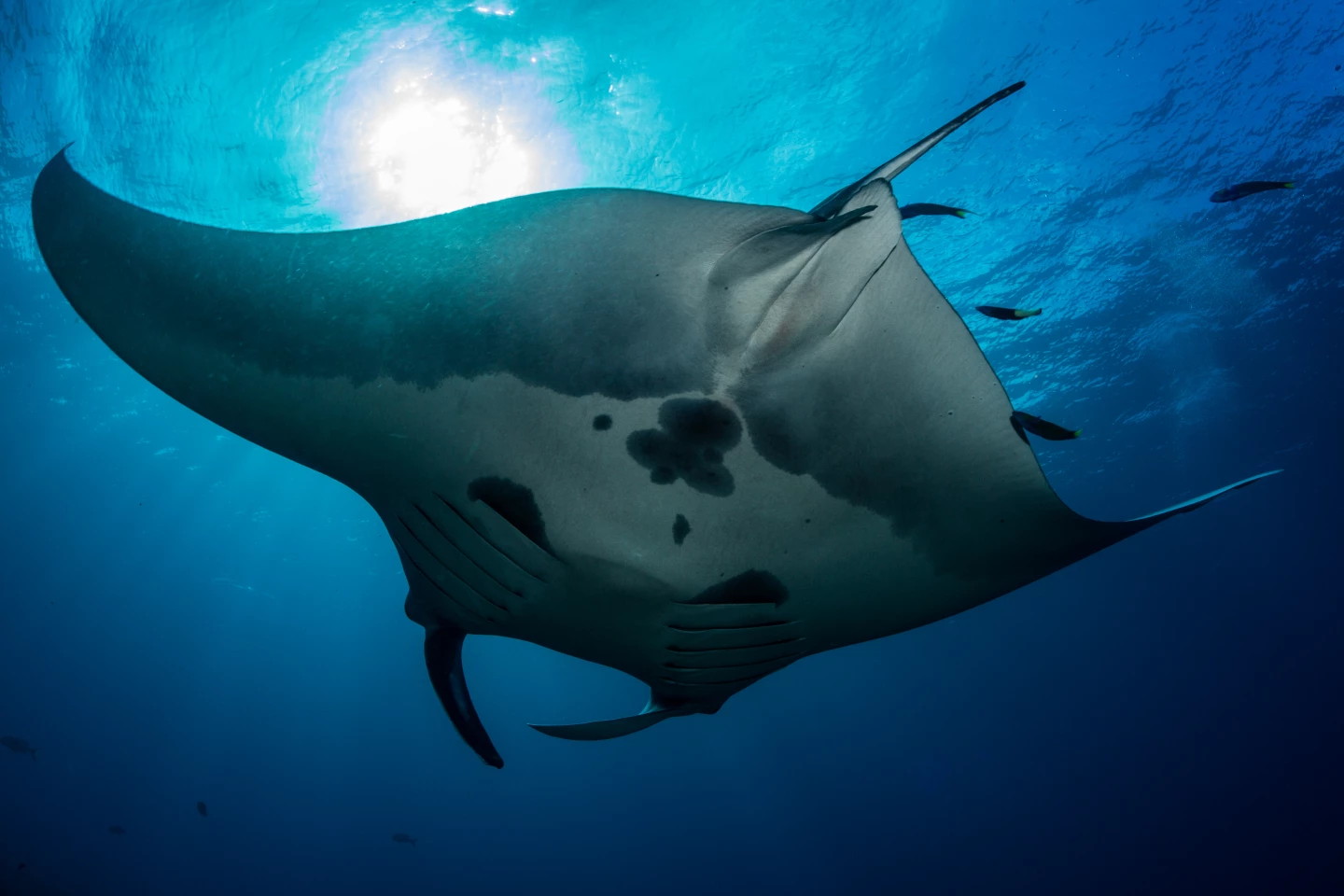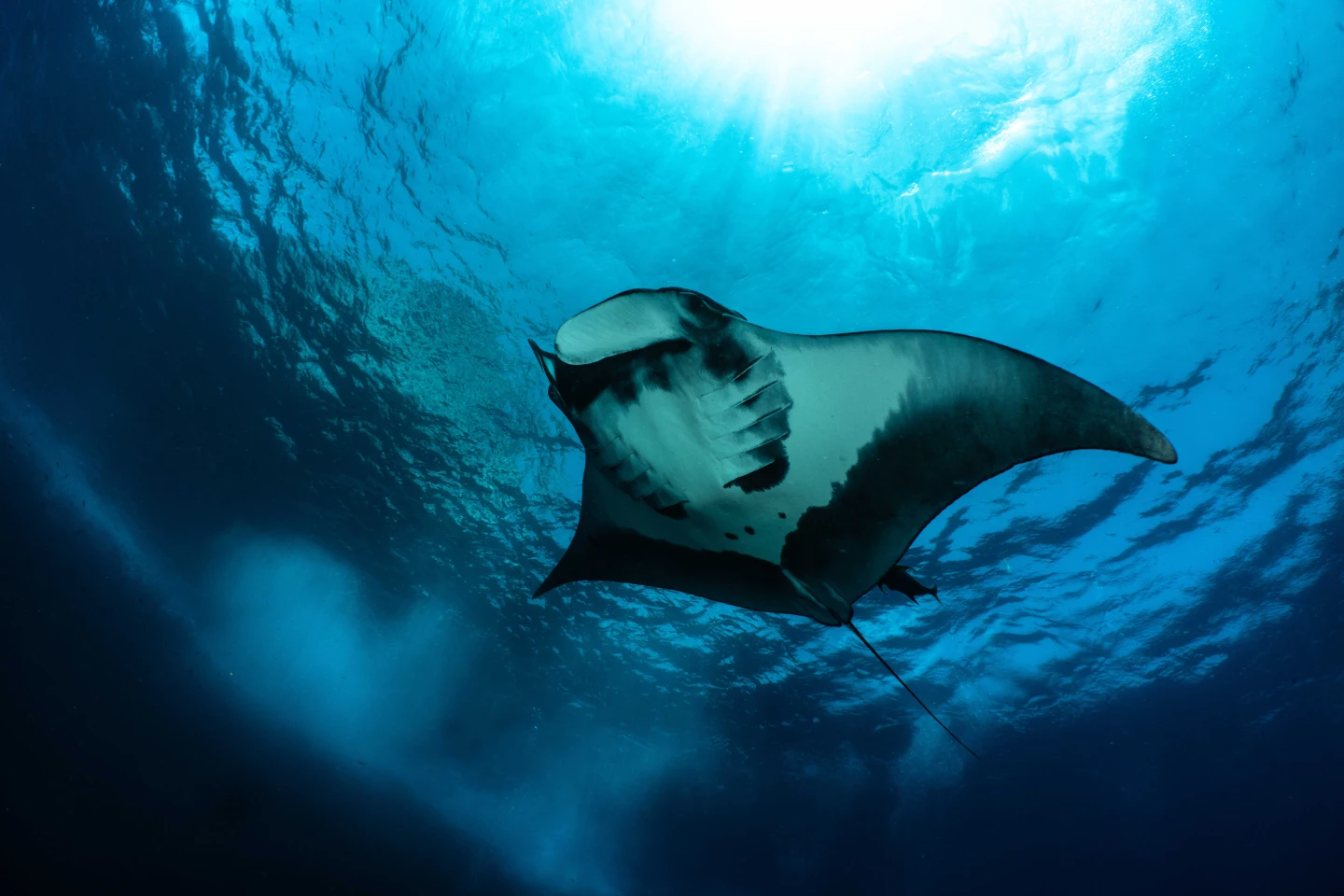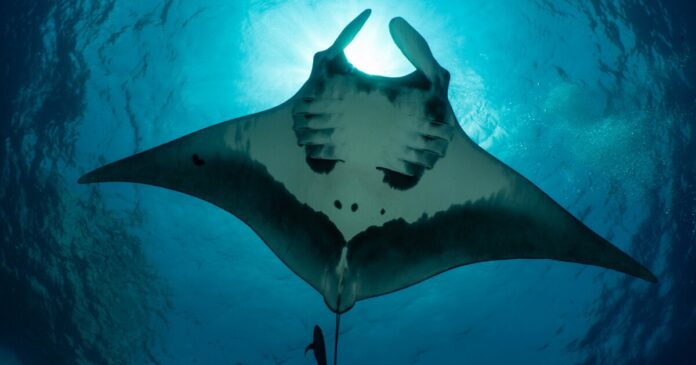Scientists have found that oceanic manta rays routinely make extreme dives of more than 1,200 meters – three-quarters of a mile – but it’s not to feed, nor is it happening everywhere in deep water. Instead, the mantas are calibrating their own kind of Google Maps as soon as they find themselves out beyond the continental shelf.
An international team of researchers in Peru, Indonesia and New Zealand found a “depth” of fascinating new knowledge about oceanic manta rays (Mobula birostris) – the largest species of ray. These mantas have an average “wingspan” of 13-15 ft (4-4.5 m), from one tip of their huge pectoral fins to the other. Rays don’t have swim bladders like other fish, nor lungs like us, so they can tolerate greater ocean depths – however, even the scientists were surprised by what they found.
“We show that, far offshore, oceanic manta rays are capable of diving to depths greater than 1,200 meters, far deeper than previously thought,” said first author Dr. Calvin Beale, who completed his PhD at Murdoch University. “These dives, which are linked with increased horizontal travel afterwards, may play an important role in helping mantas gather information about their environment and navigate across the open ocean.”
The scientists tagged 24 rays across three sites – Raja Ampat in eastern Indonesia, near Tumbes off the coast of Peru, and near Whangoroa in the northeast waters of New Zealand’s North Island – which delivered 2,705 tag-days of data over the period of study. High-frequency data was downloaded every 15 seconds from eight tags the researchers recovered with great difficulty, while the 16 others transmitted summary data via satellite.
MV Erdmann
What they found was that on 79 days, manta rays dived to extreme depths, reaching a maximum of 1,250 m (0.78 miles). What’s more, all but eight of these deep dives (in excess of 500 m, or 0.3 miles) occurred off the coast of New Zealand. Interestingly, each individual manta ray undertook its first extreme dive within a day of moving off the continental shelf into the deep ocean waters. They didn’t dive straight down, either, suggesting this wasn’t for hunting or to escape a predator; instead, they descended in a stepped pattern and spent almost no time at the maximum depth once they’d gone as far down as they wanted. They would also ascend from the depths in that same step-like way, then travel great distances in the following days, sometimes as much as 200 km (124 miles).
The researchers believe the mantas are using nature’s cues such as changes in magnetic field strength, oxygen concentration, temperature and light to navigate themselves onto the right path for the next days’ travel. Essentially, they were consulting the sea’s Google Maps to get their bearings and use this intel to navigate where they needed to go.
“By diving down and ‘sampling’ these signals, they could build a mental map that helps them navigate across vast, featureless stretches of open ocean,” Beale explained.
“The deep dives of New Zealand oceanic mantas all occur as they leave the continental shelf and began their northward migration, and it seems likely the dives are conducted in order to ‘take a better bearing’ of the magnetic lines on the bottom of the ocean,” said Dr. Mark Erdmann, Shark Conservation Director at Re:wild and one of the authors of the paper. “The study shows that immediately after deep dives, NZ oceanic mantas spend a fair bit of time warming up on the surface (likely recovering from the thermal stress of these very cold deep waters), but then start moving ‘with a purpose’ – covering up to 200 km per day in a highly directional manner for several days in a row.”

MV Erdmann
Why so deep, where the mantas’ body can take a battering? The researchers believe it’s essential for them to form a more accurate read of the ocean and their location, since the environment is more stable and predictable down deep than it is closer to the surface. Since most of this extreme diving activity was confined to the rays off the coast of New Zealand, where the shallow waters give way to deep ocean unlike in Peru or especially Indonesia, the researchers believe that the underwater topography – where the ocean floor drops off suddenly on the edge of the shelf – made it necessary for the animals to recalibrate their navigational map.
“Understanding the nature and function of deep dives helps explain how animals cross vast, seemingly featureless oceans and connect ecosystems thousands of kilometers apart,” Beale said.
While the study was a small sample – 24 individuals and only recorded interval snapshots rather than continuous behaviors – the new findings provide a template for more expansive research that could confirm the purpose of these extreme dives.
“The paper examines these dives in detail, and concludes that the likely reason the mantas braved the cold, dark, deep waters was not in search of food, nor to avoid predators – but likely for navigational purposes,” said Erdmann. “We now know that many, if not all, of the oceanic mantas that feed off New Zealand’s North Island in the summer months eventually migrate northwards towards warmer waters (including around Fiji and Tonga) as the seas around New Zealand cool off in the autumn and early winter.”

MV Erdmann
As well as the intriguing new behavioral intel, the findings highlight how reliant migrating species are on the environment around them as they move across habitats each year. And oceanic manta rays, now endangered, appear to depend on a part of the sea that scientists know the least about.
“Our study highlights how dependent migratory species are on both coastal and offshore habitats, stressing the need for international cooperation in their conservation,” Beale concluded. “It also reminds us that the deep ocean – which regulates Earth’s climate and underpins global fisheries – remains poorly understood but vitally important.”
The research was published in the journal Frontiers in Marine Science.
Source: Murdoch University via Scimex


